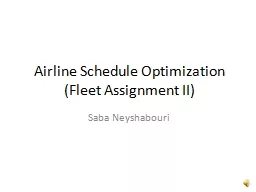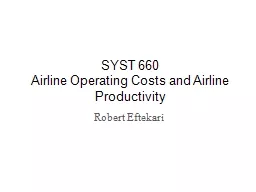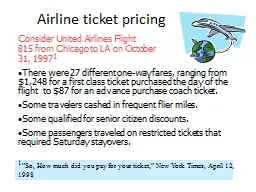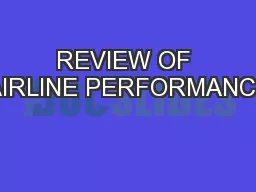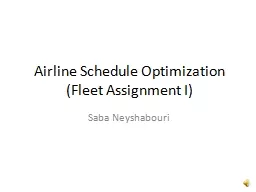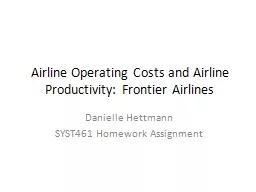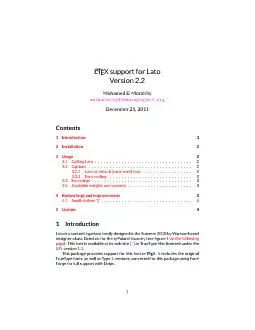PPT-Airline Schedule Optimization (Fleet Assignment II)
Author : myesha-ticknor | Published Date : 2018-09-23
Saba Neyshabouri The Fleet Assignment Model In order to develop the mathematical optimization model for this problem some modifications should be made to the underlying
Presentation Embed Code
Download Presentation
Download Presentation The PPT/PDF document "Airline Schedule Optimization (Fleet Ass..." is the property of its rightful owner. Permission is granted to download and print the materials on this website for personal, non-commercial use only, and to display it on your personal computer provided you do not modify the materials and that you retain all copyright notices contained in the materials. By downloading content from our website, you accept the terms of this agreement.
Airline Schedule Optimization (Fleet Assignment II): Transcript
Download Rules Of Document
"Airline Schedule Optimization (Fleet Assignment II)"The content belongs to its owner. You may download and print it for personal use, without modification, and keep all copyright notices. By downloading, you agree to these terms.
Related Documents

